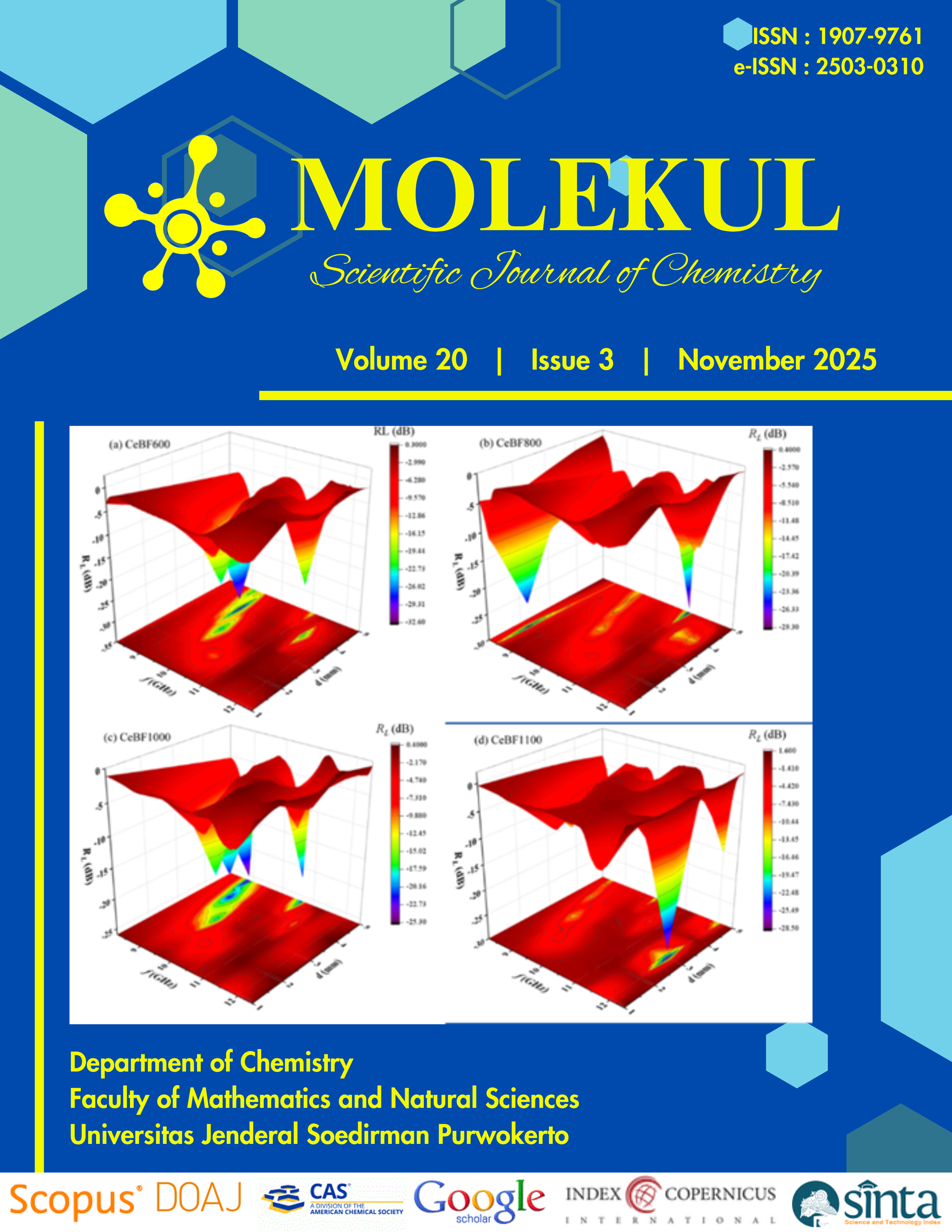In Vitro Antioxidant and α-Glucosidase Inhibitor Metabolites of Chrysanthemum indicum Flower Represented by Molecular Networking
Abstract
ABSTRACT. Chrysanthemum indicum flower is known as a Chinese medicinal plant and is consumed as a tea or food supplement. Several research reported the profiling metabolites of this flower using High-Performance Liquid Chromatography (HPLC) or Liquid Chromatography Mass Spectroscopy (LC-MS). However, there is a limitation of those methods, which are the yields several formula obtained by searching in database based on parent masses so give less effectiveness identify of compound. This study aimed to identify the metabolites in the ethanolic extract of C. indicum using a de-replication strategy by coupling Liquid Chromatography Orbitrap HRMS with a molecular network approach. This study also evaluated the total phenolic contents (TPC) using Folin-Ciocalteu method, Fourier Transfer Infrared (FTIR) Spectroscopy, while the scavenging activity against DPPH radical method was used to determine the antioxidant activity and the inhibition of α-glucosidase was conducted using α-glucosidase assay. The studies showed that there were diverse families of metabolites were putatively identified in C. indicum such as flavonoids and derivates, amino acids, fatty acids and derivates, phenol and derivates, terpenoids, and glucose. The detailed metabolites in extract were approached using application of molecular networking. In agreement with the molecular networking, the extract exerted strong antioxidant activity with % inhibition value of 76.20±1.35 at 100 µg/mL. Whereas, the α-glucosidase inhibitory activity showed good activity with % inhibition value of 83.04±0.52 at 50 µg/mL. The results of this study provide a new metabolite library for C. indicum ethanol extract as well as the confirmation of some of its biological activities.
Keywords: Chrysanthemum, profiling metabolites, LC-HRMS
Authors agree with the statements below:
- Authors automatically transfer the copyright to the MOLEKUL journal and grant the journal right of first publication with the work simultaneously licensed under a Creative Commons Attribution 4.0 International License (CC BY 4.0).
- Authors are able to enter into separate permission for the non-exclusive distribution of the journal's published version of the work (e.g., post it to an institutional repository or publish it in a book), with an acknowledgment of its initial publication in this journal.













